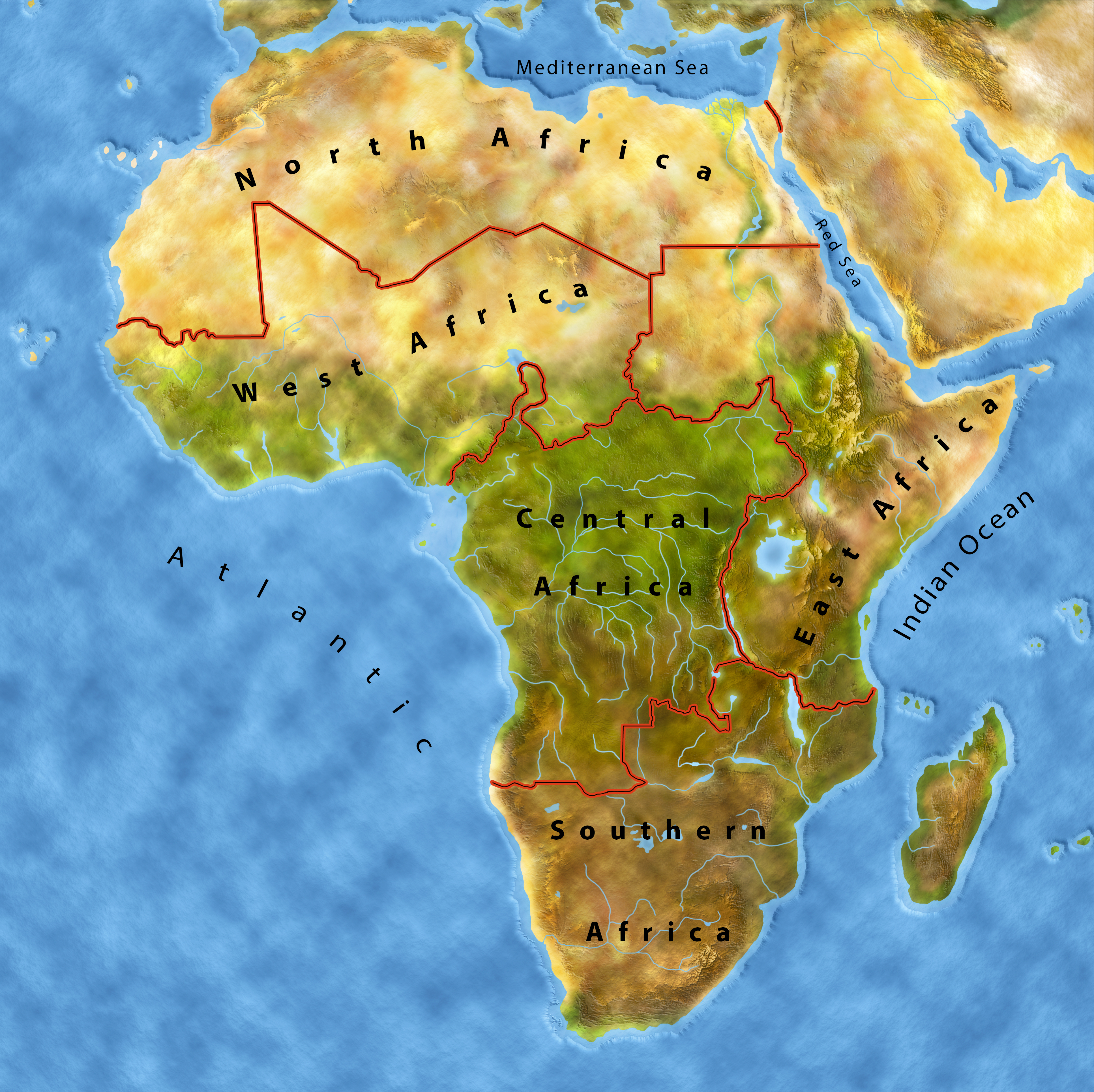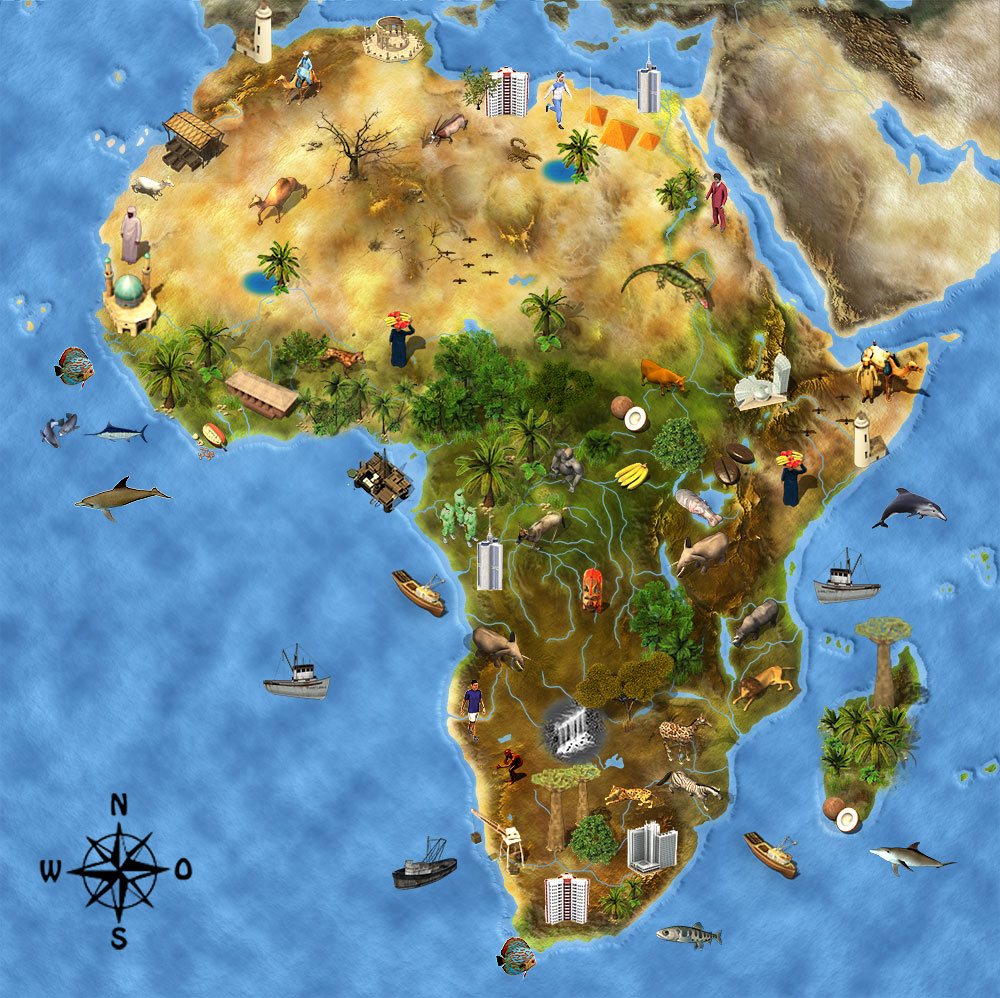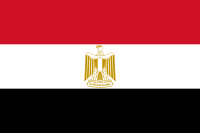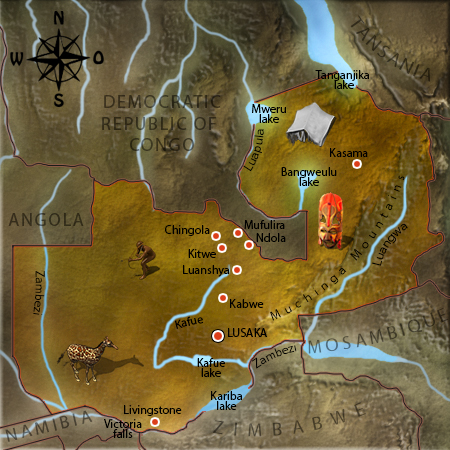Bwanji (pronounced Bwan-jj), welcome to Zambia, the wild heart of Africa!
Zambia is almost in the middle of the African continent; this is why it is called the wild heart of Africa. Zambia combines southern and eastern Africa.
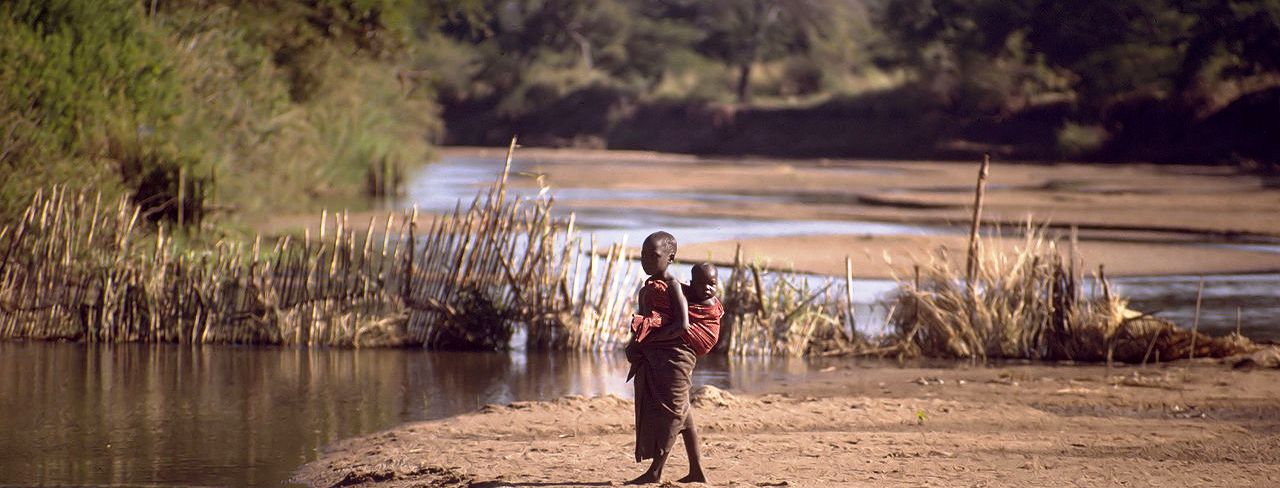
Zambia is a landlocked country without access to the ocean. As a landlocked country it is surrounded by many neighboring countries: Tanzania, Mozambique, Angola, the Democratic Republic of Congo, Zimbabwe, Malawi, and Botswana.
Landscapes
Zambia is a very pretty, diverse country with tropical jungles and vast savannahs. The largest part consists of fertile highlands that are crossed with deep valleys. The highest rise in Zambia consist of the Mafinga Hills in the northwest. Mount Mafinga is the highest mountain in this range with a height of 2300 meters. Zambia’s landscapes are also marked by rivers and lakes. The Congo flows through the north of Zambia.
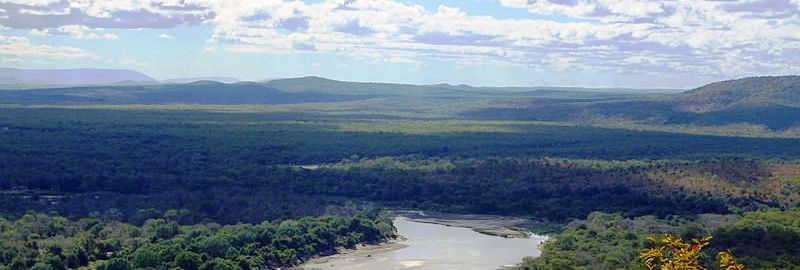
The Zambesi flows across the country. Many smaller rivers branch off these two main rivers and ensure that the ground is fertile. In the western part of the country you will find the semi-desert Kalahari, which reaches all the way into Botswana. The climate in Zambia is tropical with two dry seasons and a rainy season. The rainy seasons begins in December and ends in April. In this time period the temperatures can get as hot as 38 degrees. It is cooler during the dry season.
The Zambesi – The Lifeline of Southern Africa

Zambia has its name from the Zambesi. The Zambesi forms a natural border in the south to Zimbabwe with the huge Kariba Reservoir. It provides electricity for both the countries. The fourth largest river in Africa begins its journey in the highlands of Zambia. On the map in the upper right you can see the rivers path quite well. The Zambesi is named “thundering river” by many locals since it passes so many waterfalls. The most famous waterfall it passes are probably the Victoria Falls. You can hear the thundering of the water masses more than 30 kilometers away. The Zambesi plunges into the depths over a width of almost two thousand meters here. Because of its many waterfalls the Zambesi cannot be travelled on by boat in many places. This is why there are many streets and rail roads. They connect Zambia with the ports in Tanzania, Angola, and Mozambique.
Animal Kingdom
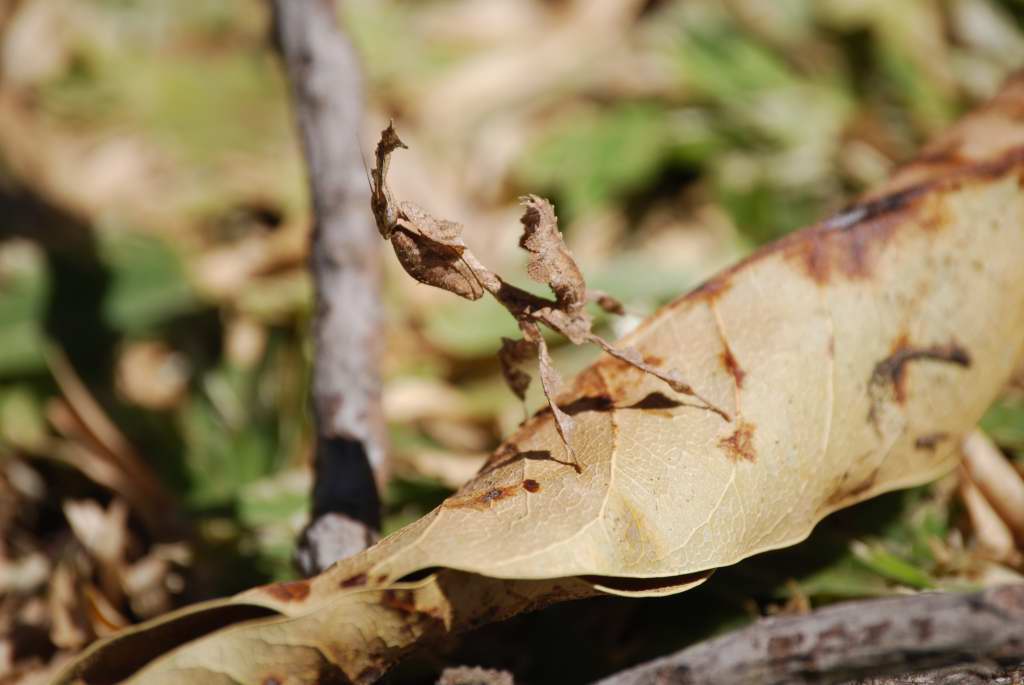 Most of the inhabitants of the tropical jungles in the headwaters of the Zambesi are almost invisible. Chameleons, Gabon vipers, vervet monkeys, and an array of colorful birds, butterflies, and insect live in the different “floors” of the primal woods. You can admire the probably most abundant wetlands of Africa in the underflow of the river. This area is an Eldorado for the animal kingdom. On the river banks of the Zambesi vast numbers of water birds assemble to breed. The osprey can be seen on a regular basis and is even embellished on the flag of Zambia. You will find herds of buffalo, elephants, and antelopes in the savannahs here. Even lions and zebras can be observed in their natural habitat here. Rhinoceroses, monkeys, baboons, wild boars, and crocodiles can be found with a little bit of luck as well. Many rare species of birds breed in the Lochinvar National Park. You will always find insects in places with many birds. Can you spot the leaf insect on the photo? It has disguised itself as a leaf to confuse its enemies.
Most of the inhabitants of the tropical jungles in the headwaters of the Zambesi are almost invisible. Chameleons, Gabon vipers, vervet monkeys, and an array of colorful birds, butterflies, and insect live in the different “floors” of the primal woods. You can admire the probably most abundant wetlands of Africa in the underflow of the river. This area is an Eldorado for the animal kingdom. On the river banks of the Zambesi vast numbers of water birds assemble to breed. The osprey can be seen on a regular basis and is even embellished on the flag of Zambia. You will find herds of buffalo, elephants, and antelopes in the savannahs here. Even lions and zebras can be observed in their natural habitat here. Rhinoceroses, monkeys, baboons, wild boars, and crocodiles can be found with a little bit of luck as well. Many rare species of birds breed in the Lochinvar National Park. You will always find insects in places with many birds. Can you spot the leaf insect on the photo? It has disguised itself as a leaf to confuse its enemies.
Lusaka
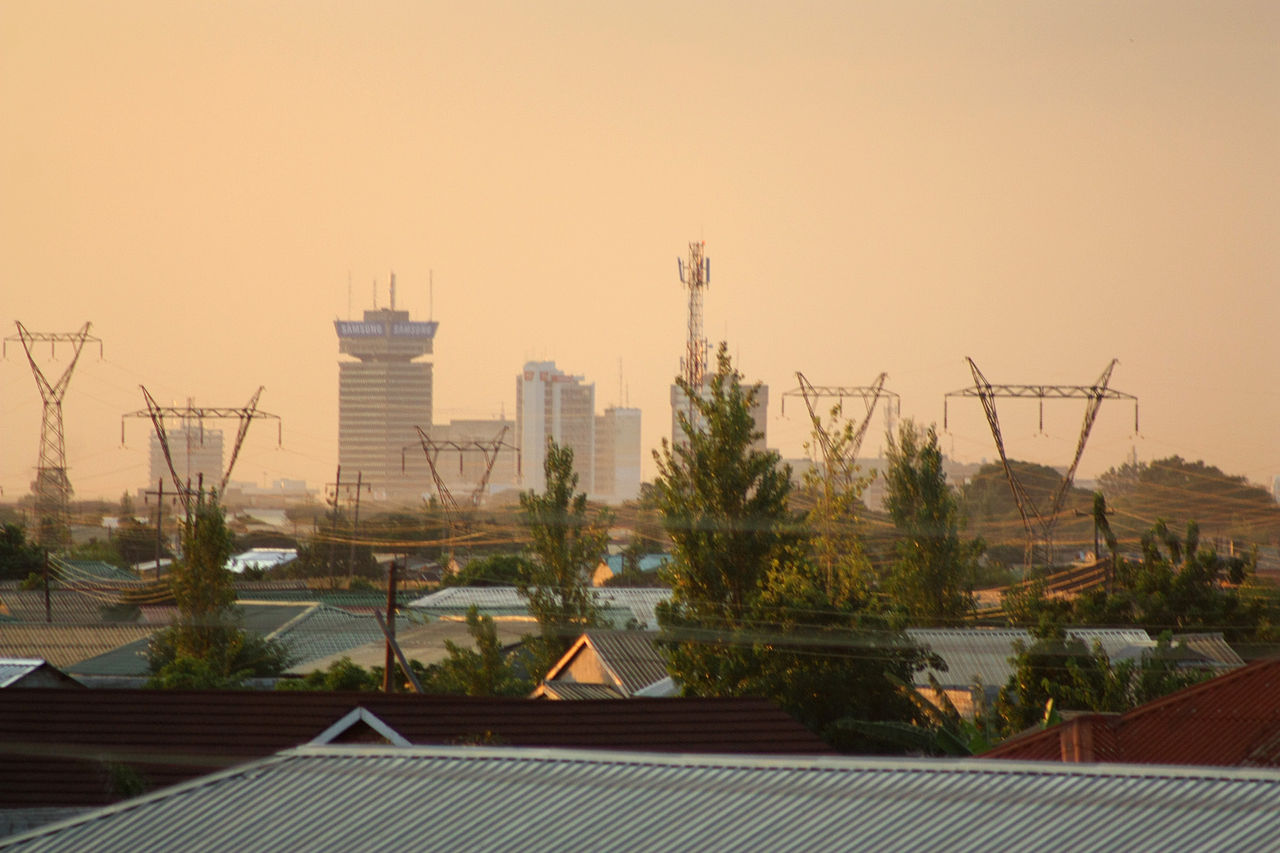 Lusaka is Zambia’s capital with more than a million inhabitants. The capital is also the nation’s political and economic center. Lusaka is in the southern part of Zambia and lies on a plateau that is 1000 meters high. The city center is coined by large and modern sky scrapers. Insurances, banks, and other companies have settled here. Many industrial firms have set up shop in Lusaka as well. The poor people live in simple huts in the outskirts. Special attractions of the city include the countless museums and the very colorful markets. Near the city is also the largest international airport in Zambia.
Lusaka is Zambia’s capital with more than a million inhabitants. The capital is also the nation’s political and economic center. Lusaka is in the southern part of Zambia and lies on a plateau that is 1000 meters high. The city center is coined by large and modern sky scrapers. Insurances, banks, and other companies have settled here. Many industrial firms have set up shop in Lusaka as well. The poor people live in simple huts in the outskirts. Special attractions of the city include the countless museums and the very colorful markets. Near the city is also the largest international airport in Zambia.
Peoples and Languages
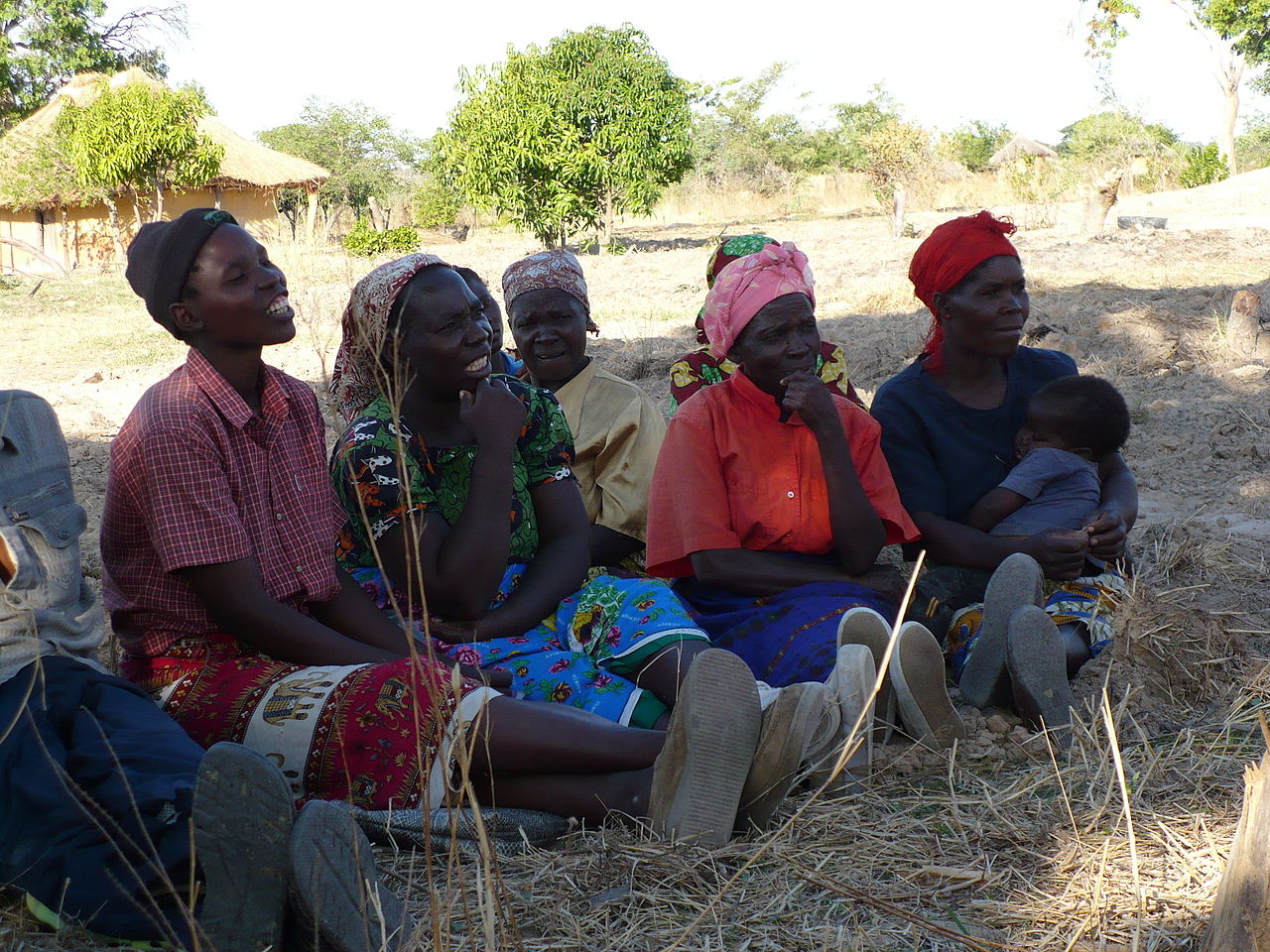
Schools and Education
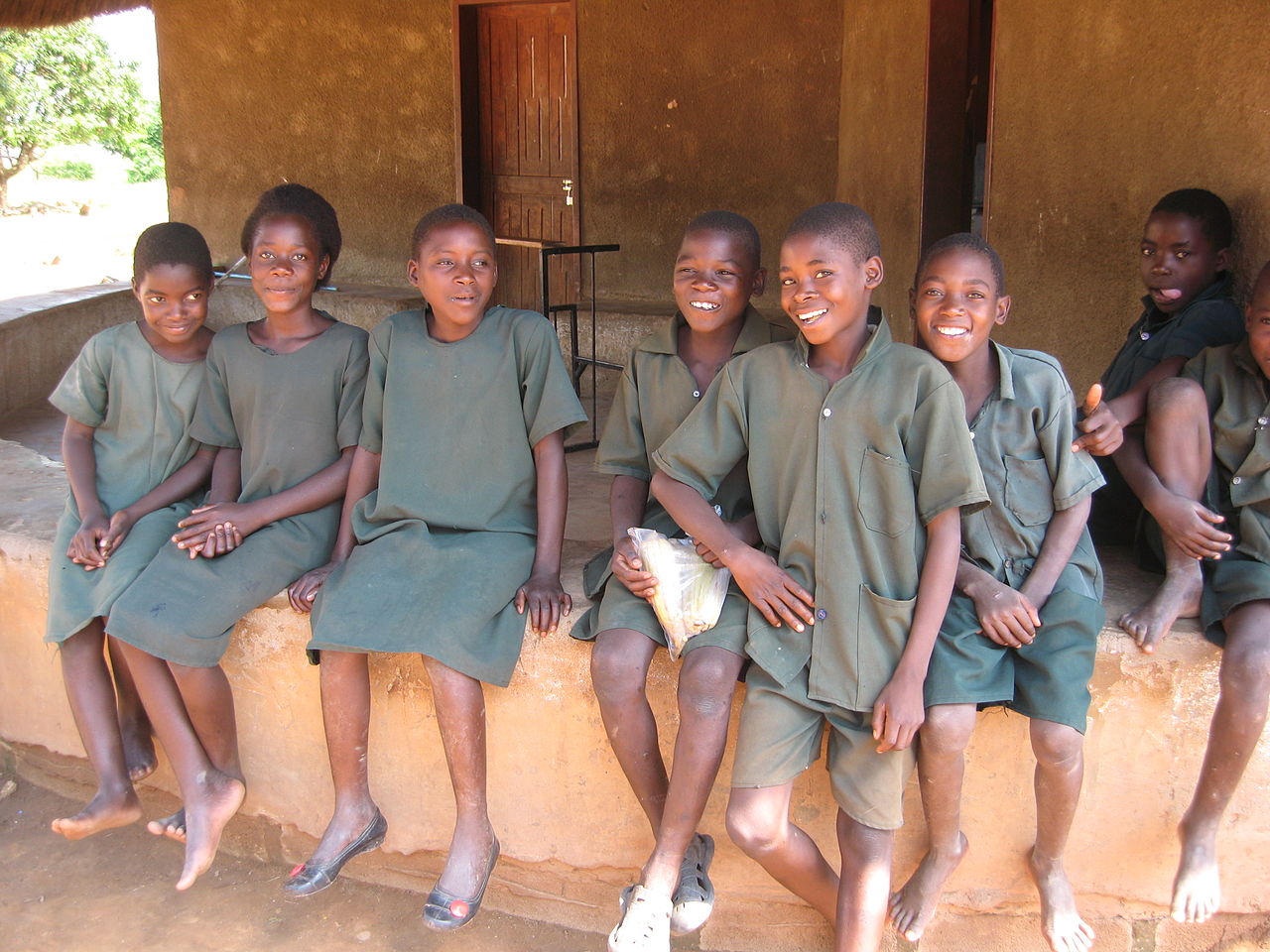 Directly after Zambia gained independence in 1963 the first schools in the country were built in Lusaka and the first public university was founded. Only the upper social classes can afford to attend university and often even schools though. The schools in Zambia are modelled after the British school system. Primary school is mandatory. Parents do not have to pay for their children to attend. School clothing and materials can get quite expensive though. This is why, despite school being mandatory, many do not attend. Beginning in secondary school a tuition of approximately 30 Euros a month needs to be paid. Many parents do not earn enough to pay for all of their children’s tuitions. For this reason, many young girls do not attend a secondary school and often do not even graduate from primary school.
Directly after Zambia gained independence in 1963 the first schools in the country were built in Lusaka and the first public university was founded. Only the upper social classes can afford to attend university and often even schools though. The schools in Zambia are modelled after the British school system. Primary school is mandatory. Parents do not have to pay for their children to attend. School clothing and materials can get quite expensive though. This is why, despite school being mandatory, many do not attend. Beginning in secondary school a tuition of approximately 30 Euros a month needs to be paid. Many parents do not earn enough to pay for all of their children’s tuitions. For this reason, many young girls do not attend a secondary school and often do not even graduate from primary school.
What Children Play
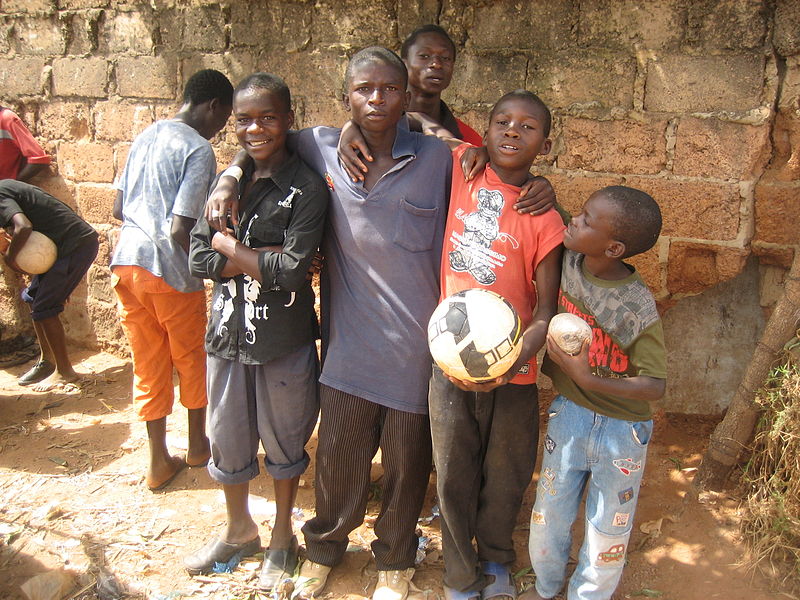
Economy and Natural Resources
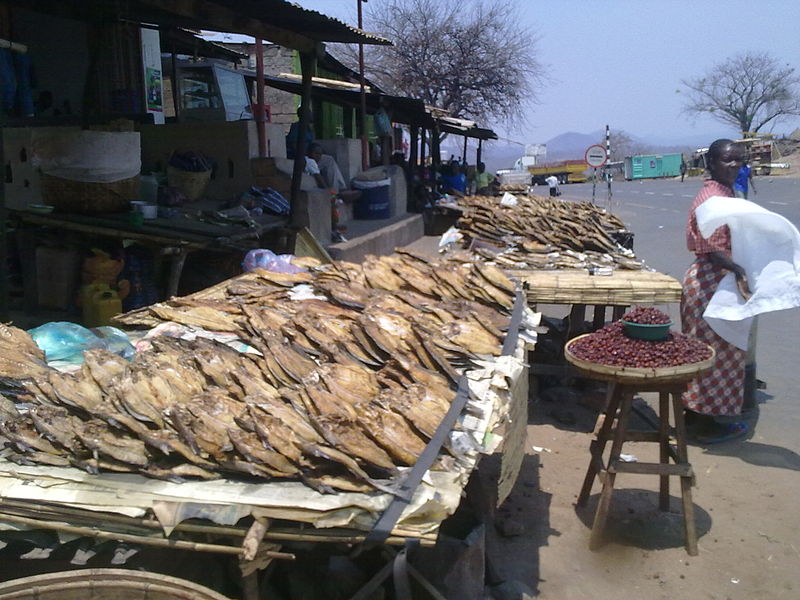 Most Zambians work in agriculture. Mining has been growing more and more important though. There are many natural resources here that are very important for the economy, such as copper and cobalt. About a third of the worlds copper reserves can be found in Zambia. Tin, lead and other minerals are mined here as well. Tourism, the service industry, and the communication industry play an increasingly large role in the economy of the country as well. To the right you can see a market in Lusaka where dried fish are sold.
Most Zambians work in agriculture. Mining has been growing more and more important though. There are many natural resources here that are very important for the economy, such as copper and cobalt. About a third of the worlds copper reserves can be found in Zambia. Tin, lead and other minerals are mined here as well. Tourism, the service industry, and the communication industry play an increasingly large role in the economy of the country as well. To the right you can see a market in Lusaka where dried fish are sold.
Attractions in Zambia
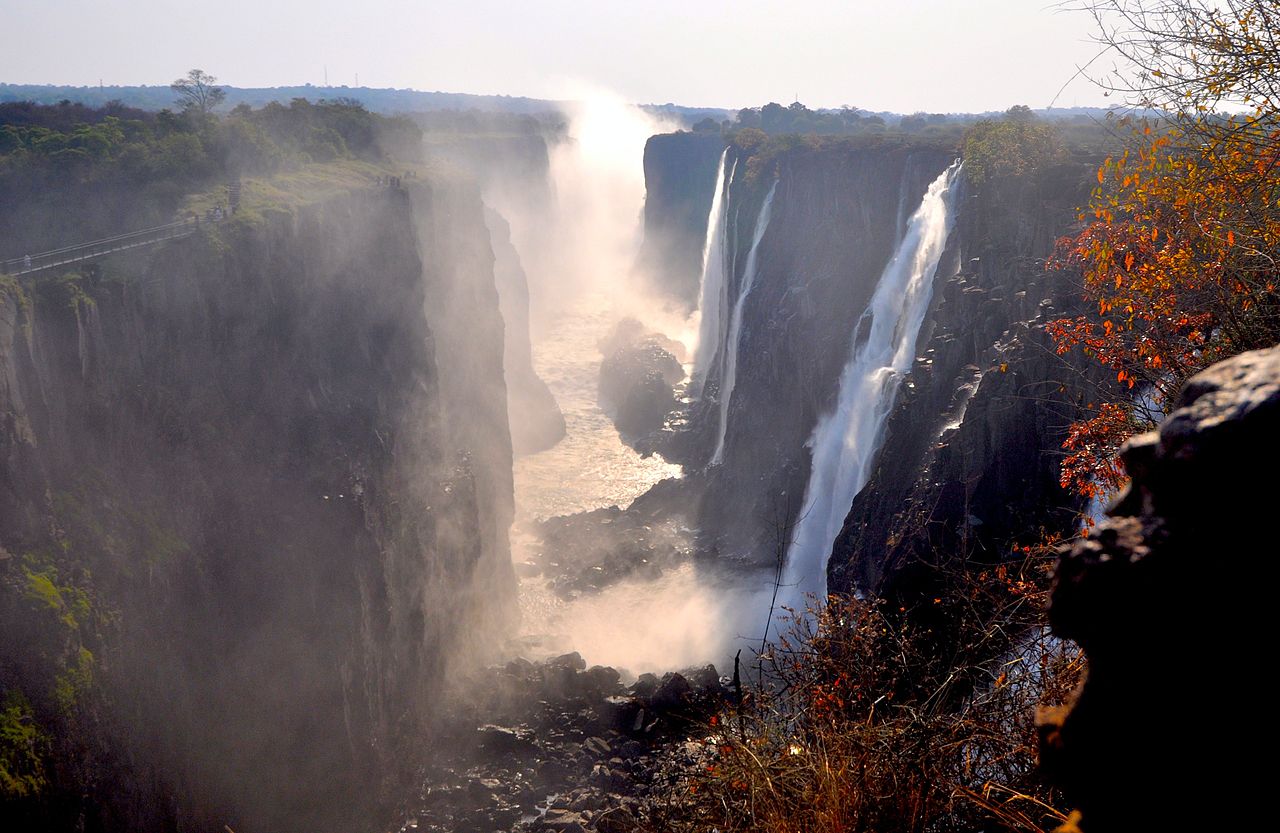 The Victoria Falls are an adventure for everybody who visits southern Africa. The city Livingstone near the Victoria Falls Bridge functions as a starting point for safaris to the famous water falls. The Victoria Falls – which can be seen on the picture to the left – belong to the UNESCO World Heritage Program today. You can experience the rich animal kingdom of southern Africa in one of the countless national parks and wildlife reserves. Many rare species of birds call the Kafue National Park in the southern part of the country their home. In the South Luangwa National Park, you can observe large wildlife such as giraffes, lions, elephants, buffalo, antelope or even wild dogs.
The Victoria Falls are an adventure for everybody who visits southern Africa. The city Livingstone near the Victoria Falls Bridge functions as a starting point for safaris to the famous water falls. The Victoria Falls – which can be seen on the picture to the left – belong to the UNESCO World Heritage Program today. You can experience the rich animal kingdom of southern Africa in one of the countless national parks and wildlife reserves. Many rare species of birds call the Kafue National Park in the southern part of the country their home. In the South Luangwa National Park, you can observe large wildlife such as giraffes, lions, elephants, buffalo, antelope or even wild dogs.
Holidays and Festivities
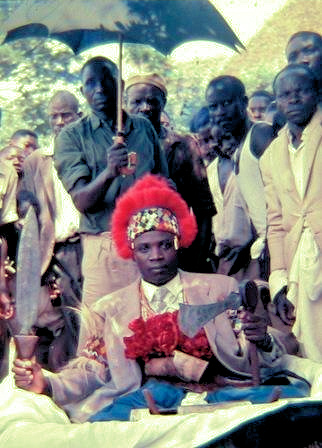
Next to Christian holidays, New Years and the Africa Day on May 24th the peoples of Zambia celebrate many traditional festivities. There are parties in honor of their ancestors, thanksgiving-like festivities, and celebrations where the old traditions are honored. One of the most famous festivities is the Kazanga. This party is celebrated between June and August and it counts as one of the oldest traditions in Zambia. You can learn about old Bantu customs and experience their music and dances first hand. Near Easter the Kuomboka is celebrated. The most famous festival in Zambia. It is about the ceremonial migration of the Lozi King from the dry region near Lealui to the wetter region Limulunga. On this day the king Mwata Kazembe XVII of Zambia is brought to his new domicile by hundreds of helpers.
Zambia’s History
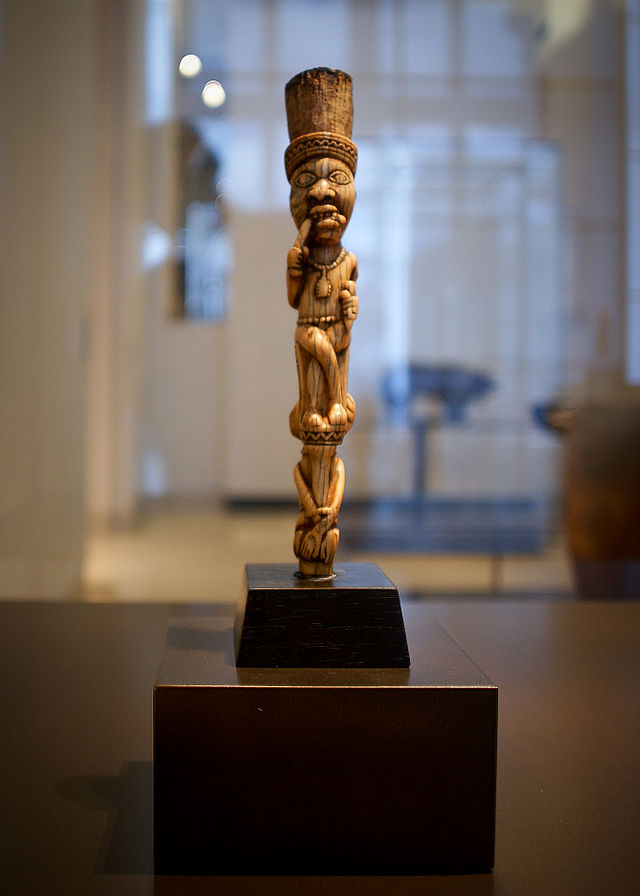 In the primeval times the bush peoples wandered the savannahs of Zambia. The cave paintings near Solwezi come from them. They were driven out by Bantu peoples who migrated here from the Congo Valley. The Bantus were famers and shepherds and they began settling in the area around the Zambezi. The Ndbele, Shonga, and the Tonga belong to these groups. The population grew and towns were built. Around the tenth century after Christ the Bantus began trading with the Arabians on the east coast. Ivory, gold, and slaves were dealt with. Kingdoms were founded along the Zambezi. After the mid-19th century, European missionaries and traders discovered the area. The first European who saw the Victoriafalls was David Livingstone. He named the falls after Queen Victoria. Cecil Rhodes was the other prominent European who came to Zambia at that time. He was interested in exploiting the mineral resources of the region. Soon Zambia became a British protectorate. Hundred years later the Zambian peoples wanted to get rid of the foreign rule. In 1964 they became independent from British rule.
In the primeval times the bush peoples wandered the savannahs of Zambia. The cave paintings near Solwezi come from them. They were driven out by Bantu peoples who migrated here from the Congo Valley. The Bantus were famers and shepherds and they began settling in the area around the Zambezi. The Ndbele, Shonga, and the Tonga belong to these groups. The population grew and towns were built. Around the tenth century after Christ the Bantus began trading with the Arabians on the east coast. Ivory, gold, and slaves were dealt with. Kingdoms were founded along the Zambezi. After the mid-19th century, European missionaries and traders discovered the area. The first European who saw the Victoriafalls was David Livingstone. He named the falls after Queen Victoria. Cecil Rhodes was the other prominent European who came to Zambia at that time. He was interested in exploiting the mineral resources of the region. Soon Zambia became a British protectorate. Hundred years later the Zambian peoples wanted to get rid of the foreign rule. In 1964 they became independent from British rule.
To the right you can see a Yombe sculpture.
Zambia Today
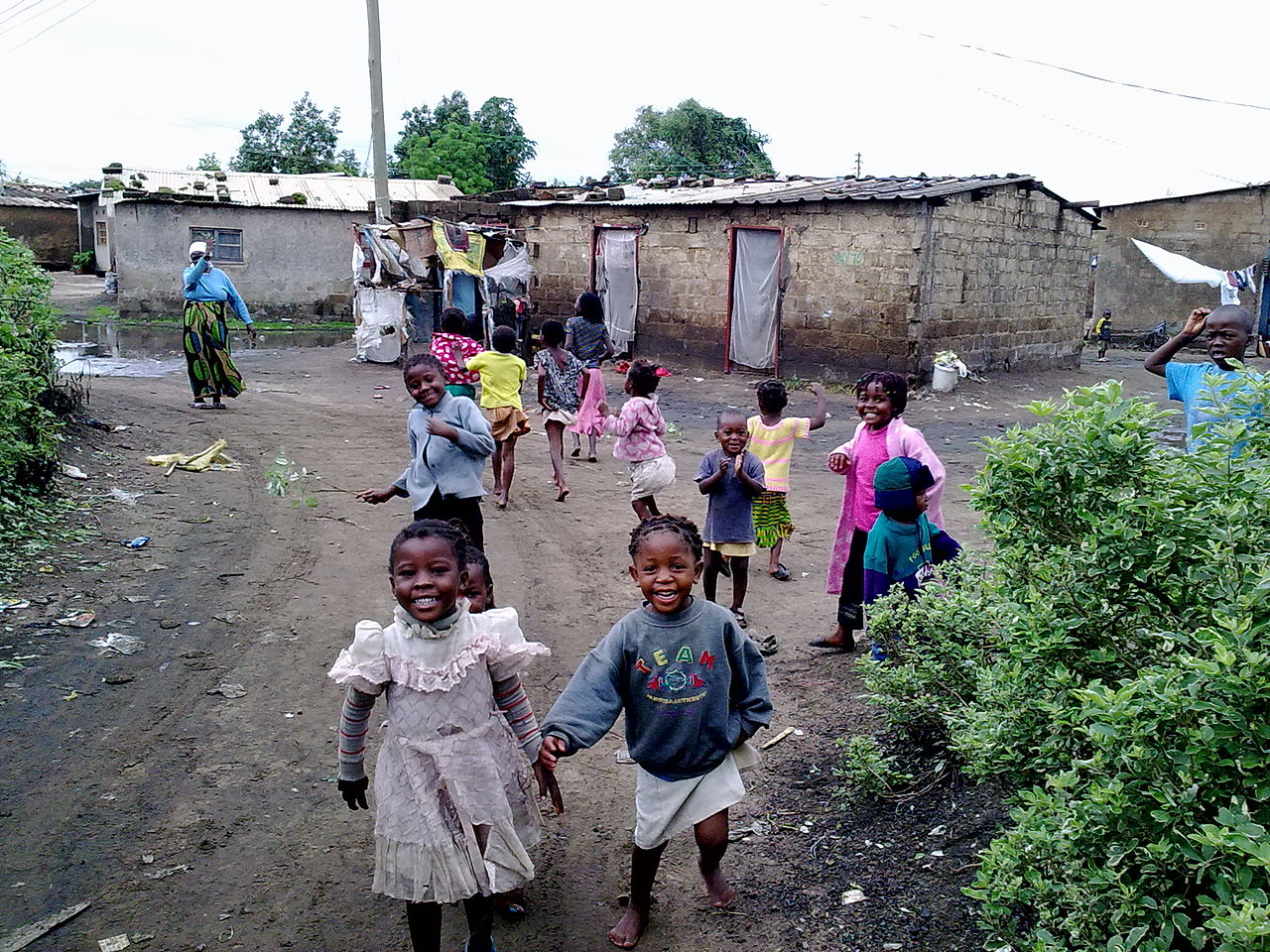 The first free elections in Zambia were held in the nineties. Since then the country is on its way to becoming a democracy. Zambia used to be one of the poorest countries in Africa. The Zambians were able to strengthen their economy though and the income of the population grew. The main reason for this is that the political system is now stable. The country is fighting with the aftermath of an AIDS epidemic. Many children have lost their parents. Most live with relatives or have to somehow manage all alone. They work on the markets, help with the fishing or on the fields. The government is slowly beginning to invest in secondary education for youngsters.
The first free elections in Zambia were held in the nineties. Since then the country is on its way to becoming a democracy. Zambia used to be one of the poorest countries in Africa. The Zambians were able to strengthen their economy though and the income of the population grew. The main reason for this is that the political system is now stable. The country is fighting with the aftermath of an AIDS epidemic. Many children have lost their parents. Most live with relatives or have to somehow manage all alone. They work on the markets, help with the fishing or on the fields. The government is slowly beginning to invest in secondary education for youngsters.



